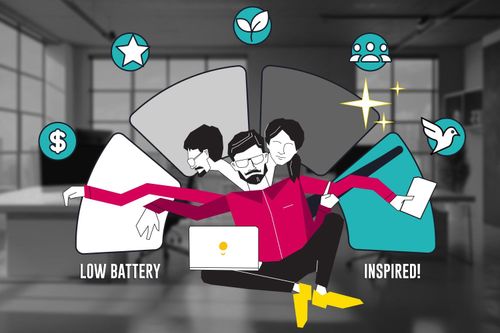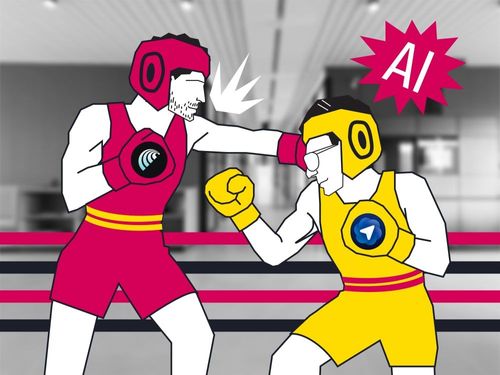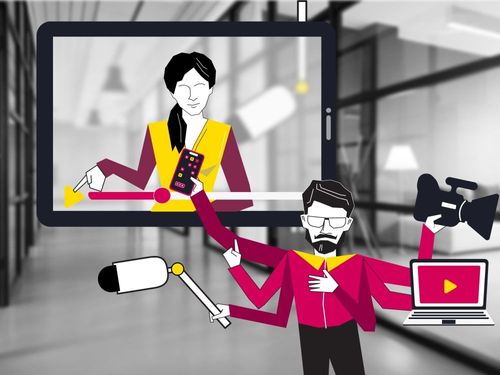
You’ve got deadlines breathing down your neck. Your product roadmap keeps expanding. You are feeling the talent shortage… Between 2021 and 2024, global demand for skilled developers exploded, especially in AI, cloud, and cybersecurity.
The result? Hiring takes forever, onboarding slows down delivery, and team burnout isn’t just a buzzword.
According to recent market research, the global IT outsourcing sector will reach $744.6 billion by the end of 2024 and is projected to continue growing at an annual rate of 8.6%, hitting approximately $807.9 billion by 2025.
Yet, choosing between outsourcing and outstaffing isn't always straightforward. What’s the smarter move for project — outsourcing or outstaffing? Let's break down these models to identify which aligns best.
What is Outsourcing in Software Development?
Outsourcing is when you hire another company to take care of a certain project or task. It's like getting an expert team to build a house based on your plans. A lot of small businesses like outsourcing because it allows them to get clear timelines and commitment to execution.
Pros of Outsourcing:
- Leverage Specialized Expertise: the right choice allows you to work with folks who are pros at what they do, in niche areas like Java dev, to AI, blockchain and cybersecurity.
- Increased Focus: in-house teams can concentrate on core competencies and strategic initiatives without being sidetracked by specialized technicalities.
- Refined Processes: optimized workflows helped significantly reduced operational risks.
- Scalability at Speed: scale the resources on a project up or down quickly without HR issues or long-term onboarding.
Cons of Outsourcing:
- Lack of direct control: Over-reliance on outsourced management may result in diminished control over day-to-day operations.
- Communication Gap: Cultural and language differences may at times result in misunderstandings or mismatched expectations.
What is Outstaffing? Your Dream Team, Just Not in Your Office
Outstaffing is all about hiring the best players from around the world to join your in-house team. They wear your team colors and play for you, but technically, they're hired through another company. You’re still in control and can make sure they both have the skills and are a good fit for you. You can beef up your team without worrying about the usual hiring headaches like recruitment costs or office space.
Pros of Outstaffing:
- Global Talent Pool: Tap into the best talent from across the globe, beyond local talent gaps.
- Cost Efficiency: save money since offshore talent is usually more affordable, and you're not dealing with the usual costs of hiring someone full-time.
- Seamless Integration: off-site developers blend into your team smoothly, joining in on your meetings, adhering to your workflows, and company culture.
- Flexible Team Dynamics: Change your team size as needed, which is great for managing budgets or changing project needs.
Cons of Outstaffing:
- Integration Time: Upfront integration and cultural alignment can cause temporary productivity lows.
- Communication Challenges: Adapting to time zones and setting proper communication procedures requires effort up front.
How to Choose Between Outsourcing and Outstaffing
Here’s a quick cheat sheet:
| Question | If YES → Choose |
| Do you need full control? | Outstaffing |
| Is speed your top priority? | Outsourcing |
| Do you need a short-term build? | Outsourcing |
| Is this a long-term product with evolving needs? | Outstaffing |
| Do you want to test a concept with minimal risk? | Outsourcing |
| Do you want dedicated devs committed to your stack? | Outstaffing |
A Word of Caution: Not All Vendors Are Created Equal
Keep in mind that some companies operating in both of these markets aren’t very reliable. They don’t employ the talent in-house, lie about their experience, and put developers on more than one project at the same time.
At Smartexe, we've got this special thing called "Organic Outstaffing Teams." We pick developers who are not only skilled but also work well together. We put them in a separate office with your logo on the door and add a supervisor on our expense to make sure everything goes smoothly.
Choosing what's best for you - outsourcing or outstaffing - depends on how much control you want, the complexity of your project, and whether you're looking for a short-term fix or a long-term partnership.
In the end, whether you go with outsourcing or outstaffing, it's all about what your project needs and what your goals are. Smartexe's approach with Organic Outstaffing Teams offers a fresh take, blending the best of both worlds to ensure you get a team that's not just skilled but also fully on board with your vision.
Like our tips and insights? Follow us for more original content.




















